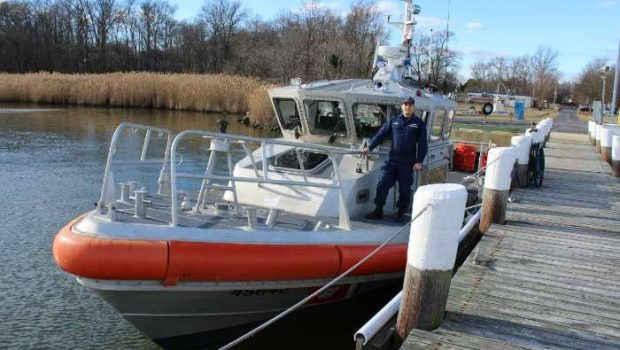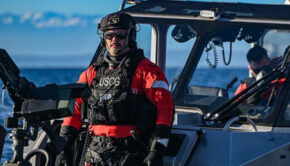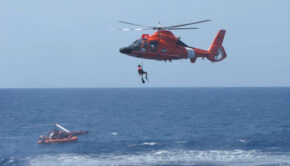Know 5 things before calling Coast Guard
Published on February 7th, 2023
by Beth Crabtree, SpinSheet
On a sunny but cold and breezy January afternoon I had the pleasure of meeting Senior Chief Matt Kinsman, officer in charge at the Coast Guard Station Annapolis. Senior chief Kinsman explained that although the Annapolis location is a ‘response’ station, its staff takes a ‘prevention’ stance to help promote boater safety, education, and good seamanship. Here are the answers to a few questions that I posed to him.
What happens when a call for help comes in?
When a distress call comes into the Annapolis station, immediately everyone gets very quiet and focuses on the situation being conveyed. I begin planning how best to respond: how to prep the boats, what equipment will be needed, how should we be dressed for the weather? Depending on the situation we may have a crew briefing at the station or on the rescue boat while “en route.” From the time a distress call comes in, our maximum allowable time to launch the boats is 30 minutes, but it usually doesn’t take that long. The average time is closer to 10 minutes.
Name a few things you would like sailors and boaters to know before leaving the dock.
In addition to the basics of operating their boat, it is important to understand weather, boat maintenance, safety procedures, crew management, and seamanship skills. Know your boat’s limits, but also know your own limits. We are here to help. I’d much rather someone call in with a question—whether it’s about the waterways, the weather, or to file a float plan—than to do a search and rescue. The Annapolis station can be reached at (410) 267-8107.
What are the top five things you want to know from a sailor or boater who makes a distress call? – Full report









 We’ll keep your information safe.
We’ll keep your information safe.